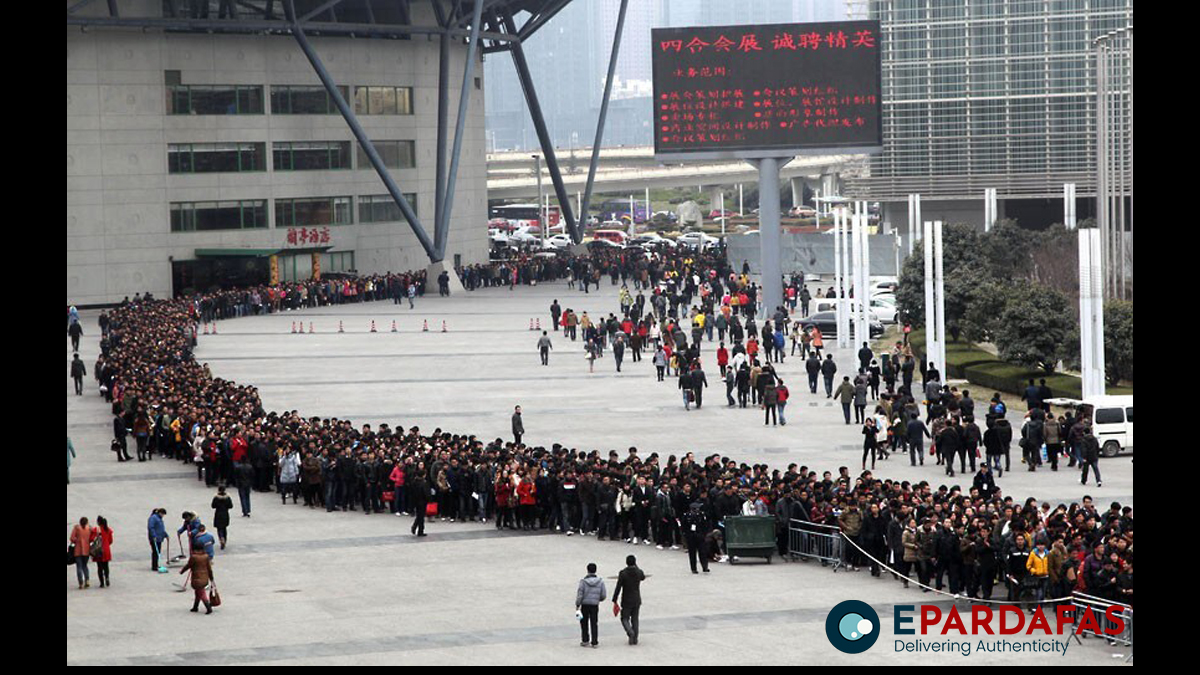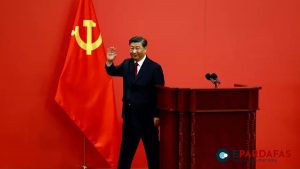
Job Losses and Wage Cuts in China: Economic Downturn Raises Concerns
Job losses and wage cuts from China’s economic downturn are hitting key industries, raising potential political difficulties for the ruling Chinese Communist Party (CCP), according to the South China Morning Post. Analysts warn that this situation, though not yet threatening the CCP’s rule or President Xi Jinping’s authority, presents a “hidden danger” unless the economy can be rejuvenated.
Rising Protests and Strikes
Rights groups report a sharp increase in protests and strikes across the country. While these actions are not significant enough to endanger the CCP’s control, they reflect growing discontent that could pose problems for Chinese authorities if economic conditions do not improve.
Personal Stories Highlight Economic Impact
Mr. Wang, in his early 40s, lives in Bao’an District, Shenzhen. Formerly employed at a leading business travel platform, he was laid off earlier this year. Preferring anonymity due to the sensitivity of the matter, Wang described the economic slowdown as akin to a high-speed train suddenly braking, causing even those previously well-off to suffer.
China’s GDP growth rate has been declining since reaching 10.6% in 2010, long before the COVID-19 pandemic slashed growth to 2.2% in 2020. The World Bank reported a rebound to 8.4% in 2021, followed by a fall to 3% in 2022 and a moderate recovery to 5.2% in 2023. However, growth is expected to drop below 5% this year.
Increasing Layoffs and Financial Struggles
Many Chinese workers were unprepared for the rapid economic slowdown. Mr. Liu, another affected worker, faced layoffs from two major IT companies in Guangzhou within two years. Struggling to find a new job, Liu also has a second child and a wife diagnosed with early-stage breast cancer. His severance pay was decent initially, but subsequent layoffs have left him feeling unlucky, though fortunately without much debt.
Large-Scale Layoffs in Major Companies
A South China Morning Post analysis of annual reports from 23 top Chinese companies revealed that 14 had significant layoffs in 2023. Technology and real estate companies were among the hardest hit, with a glut of empty buildings exacerbating the situation. For example, Poly Real Estate laid off 16.3% of its workforce, Greenland Holdings saw a 14.5% drop, and Alibaba cut 12.8% of its workforce, amounting to about 20,000 jobs. Tencent’s headcount fell 2.8% in 2023, and ByteDance, JD.com, Kuaishou, Didi Chuxing, Bilibili, and Weibo also conducted layoffs this year.
Government Reports and Employment Data
Despite these challenges, China’s National Bureau of Statistics (NBS) recently painted a more positive picture, calling employment and the national economy “generally stable” and citing “steady progress.” In June, the NBS reported only a 0.2% drop in urban jobs compared to the previous year. However, the youth unemployment rate was reported at 13.2% after students were removed from the calculation. This new methodology followed a record high youth unemployment rate of 21.3% in June 2023.
Broader Economic Struggles
Chen Yingxuan, a policy analyst at the Taiwan Institute of National Defense and Security Studies, noted that Beijing’s job worries have shifted from fresh graduates and the working class to the middle class and senior managers. Many have faced salary cuts or layoffs as China grapples with a weak housing market, sluggish consumption, high government debt, foreign investment withdrawals, and trade barriers.
Widespread Salary Cuts
Even those with relatively stable incomes, such as employees of state-owned enterprises, are feeling the pinch. Ms. Zhang, who works for a state-owned commercial bank in Guangzhou, reported widespread salary cuts. “Salary cuts started last year and seem to be worse this year,” she said, projecting a 20% to 30% reduction by year-end.
Government Response and Future Outlook
China’s 31 provincial-level administrative regions recently issued regulations calling for budget cuts and reductions in public spending. Analysts warn that further job and wage cuts could lead to intensified protests and strikes, increasing instability. China Labor Bulletin (CLB) recorded 1,794 strike incidents in 2023, more than double the number in 2022. In the past six months alone, the group documented about 1,200 incidents in protest of wage cuts, unpaid wages, unforeseen layoffs, and unfair compensation—a more than 50% increase from the same period in 2023.
Despite the increase in protests, Chen from the Taiwan Institute of National Defense and Security Studies believes the wage cuts and unemployment have not yet been severe enough to spark large-scale protests threatening the CCP or President Xi’s power. “There are no large-scale incidents, and local governments can easily quell them,” she said, though she noted that the situation poses a hidden danger for the CCP.
Struggling to Find Solutions
Chinese authorities are reportedly struggling to devise a plan to reverse the trend of unemployment and wage cuts. The communiqué of the Third Plenary Session of the 20th Central Committee of the Communist Party of China, released on July 18, mentioned employment only once, emphasizing the need to “improve the income distribution system and the employment priority policy.”
As the economic downturn continues to affect key industries and the workforce, the Chinese government faces mounting pressure to address these challenges and restore stability.













Comments